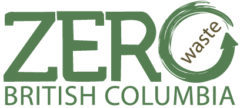Key additional resources:
- The Zero Waste International Alliance Zero Waste Hierarchy
- Comprehensive review of environmental aspects of incineration by the International Pollutant Elimination Network
- Pollution and Health Impacts of Incineration- GAIA
- Toxicowatch –reports on biomonitoring around incinerators in Europe. One example: New data links waste incinerators to toxic contamination in surrounding environments – Spain, France, Netherlands
- GHG analysis by Dr. Neil Tangri: Waste incinerators undermine clean energy goals
- US Municipal Solid Waste Incinerators: An Industry in Decline, a report by GAIA and The New School Tishman Environment and Design Center
- A great blog post from Environmental Defence Canada and a factsheet from GAIA that mythbust incineration
- A Zero Waste Europe study finding mixed waste sorting to be a more flexible and cost-effective method of emissions reduction compared to adding carbon capture to incinerators
- A Zero Waste Europe report that includes a list of 15 public health and safety concerns in using incinerator ash in so-called “circular” applications.
- Debunking Efficient Recovery: The Performance of EU Incineration Facilities, a report from Zero Waste Europe
- Denmark’s Transition to Zero Waste – a case study debunking some of the myths around Nordic incineration. Zero Waste Europe has many additional resources on this subject available on their website.
- Many forms of incineration are being touted by the plastics industry -may be called pyrolysis, gasification, advanced recycling or chemical recycling to fuel. See why this is not suitable.
- Problems with bottom ash –Zero Waste Europe
If your community is facing a threat of a Waste to Energy Facility
- List of questions to ask if your community is facing an incinerator threat –GAIA
- Numerous local governments have been approached by waste to energy salespeople resulting in elected officials wanting to see if there is something newer and better out there to make waste disappear. They continue to ask for analysis on this but the answer is always the same -the “newer” technology is not suited to mixed waste and the old mass burn system is not financially viable. This includes the Sunshine Coast, Comox Valley, and others.
- The District of Kitimat wanted to know more about the pros and cons of waste to energy. See the presentation to Council: PresentationZWBC -DoK
- The Province has a requirement that there be a regional solid waste management plan (SWMP) for each regional district. If there is to be a waste to energy facility, it must be part of that plan (or an amendment to an existing plan), which must allow for public consultation. There are requirements in order to use a waste to energy facility, which include “The SWMP is expected to include a municipal solid waste disposal rate target of 350 kg/capita/year before considering the use of WTE technologies for managing MSW. In addition, the SWMP should prioritize strategies that would help reduce, reuse and recycle waste, and ensure that WTE is not impeding these efforts.” By the time most regions meet that target, their systems will be working to reduce waste and an incinerator is not needed.
- Recommend that your local government not waste additional dollars on consultants to find the same conclusion and instead work on getting to zero waste
Comparison Table
| Waste to Energy | Landfill | Zero Waste | |
| Lifespan | 25-30 yrs | Size and flow dependent, extended when waste less | Infinite and builds |
| GHGs | Worst | Can reduce by preventing organics from disposal, landfill gas capture. Plastics sequester carbon when buried. | Decrease |
| Energy | Net loss | Net loss | Positive -saves embodied energy upstream |
| Organics | Biogenic GHGs | Methane but can prevent | Compost creates soil amendment -cycling of soil nutrients |
| Environment and Health Impacts | Very harmful | Harmful | Positive -saves upstream impacts |
| Dispersal of toxics | Yes | Limited | No |
| Capital Costs | Very expensive | Expensive | Lower -depends on programs |
| Operating costs | Very expensive to operate and maintain | Expensive | Lower -depends on programs |
| Flexibility | Lock in -must provide waste | Less waste prolongs lifespan | Nimble |
| Time frame | Years to site and build | Years to site, quicker to establish | Can start immediately |
| Supports progress | Must provide waste | If less waste can be challenge to get fees to operate | Yes |
| Community support | No | No | Yes |
| Jobs | Few | Few | More -redesign, repair, reuse, recycling, composting |
| Role of landfill | Requires both a regular landfill for the ash as well as a special toxics landfill for the fly ash | Disposal | Use existing landfill while reducing waste |
